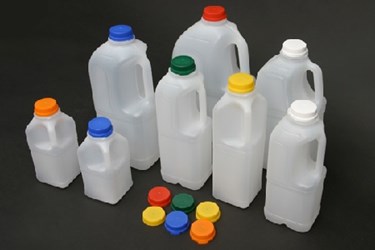3 In-Demand, Functional Additives In Plastic Packaging

By Sam Lewis

According to Smithers Pira’s new report The Future of Functional Additives and Barrier Coatings for Plastic Packaging to 2018, the demand for packaging materials that offer more protection to its product contents is quickly on the rise.
Functional additives are an essential aspect in helping meet the rising demand for more product protection in plastic packaging. This technology changes the characteristics of packaging to give additional and desired functions. In plastic packaging, several types of functional additives are used including: impact modifiers, clarifying agents, brightening solutions and antimicrobial agents, and other technologies. Below are top three functional additives currently being used in the plastic-packaging market.
Oxygen Scavengers
This technology comes in as the largest functional additive used in plastic packaging, totaling nearly 60 percent value share of the plastic-packaging market. Oxygen scavengers are used to prolong shelf life and bolster the appearance of products. They do this by removing oxygen that remains within a sealed, packaged product. More recently, innovations have allowed oxygen scavengers to be placed in bottles, cards, closures, films, and plastic lids. Oxygen scavengers are commonly used in the closures and barrier materials in PET bottles. More opportunity for this technology presents itself as the demand for ready meals grows.
Guest Column: What’s Happening With Bioplastics In Food And Beverage Packaging?
UV Stabilizers
This innovation comes in behind oxygen scavengers, making up 12 percent of the value share of functional additives in the plastic-packaging market. Sometimes called light stabilizers, UV stabilizers are added to plastic packaging to protect the packaging, as well as its contents, from both UV and infrared radiation. UV radiation can cause molecules of plastic packaging and products to break chemical bonds. This begins a chain reaction, releasing radicals that can begin destroying other molecules of the plastic packaging. The demand for barrier PET bottles, giving shield to the damaging effects of UV light, is rising in part thanks to milk. Milk contains vitamins B2 and B12 which are highly-sensitive to UV light.
Anti-Static Additives
This technology comes in third place, making up just short of 12 percent of the value market share of functional additives in the plastic-packaging market. Anti-static additives are chemicals that are added to plastic to lessen or eliminate static electricity. This sector has ultimately reached its full development and demand for anti-static additives to packaging generally follows the demand for electronics products.
This technology works by allowing the surface of the packaging to be slightly conductive. This stops static charges from forming and also discourages dust from collecting on the package. Not only does the technology improve appearance by eliminating dust, it also increases efficiency at production facilities. Since polymers can accumulate a static charge on their surface through processing lines, the buildup of static can obstruct operations at plants.
The demand for plastic additives is growing faster than the overall demand for plastic packaging. With consumer demand for more protection of their products continuing to rise, expect the market for functional additives in plastic packaging to mirror that increase.
